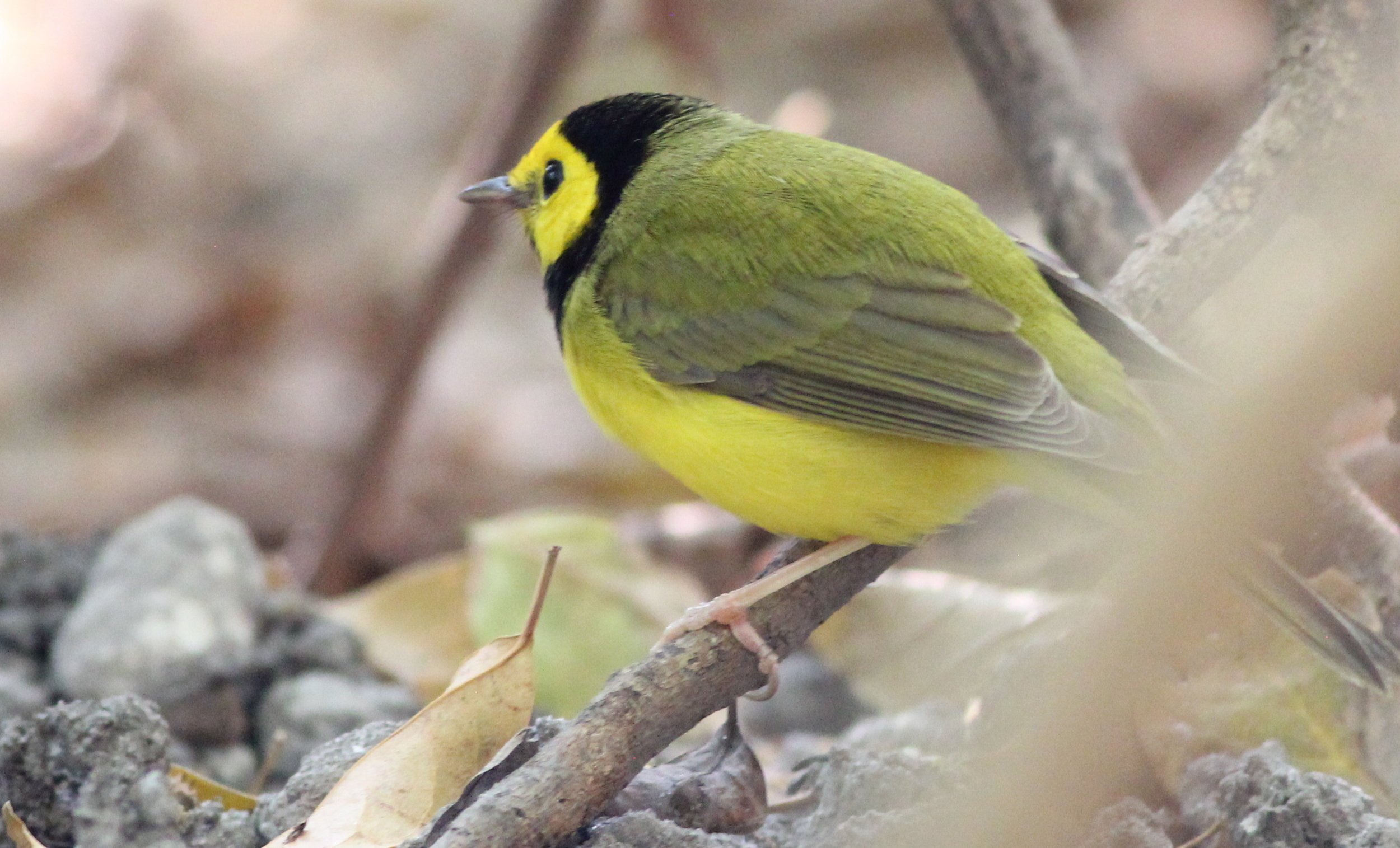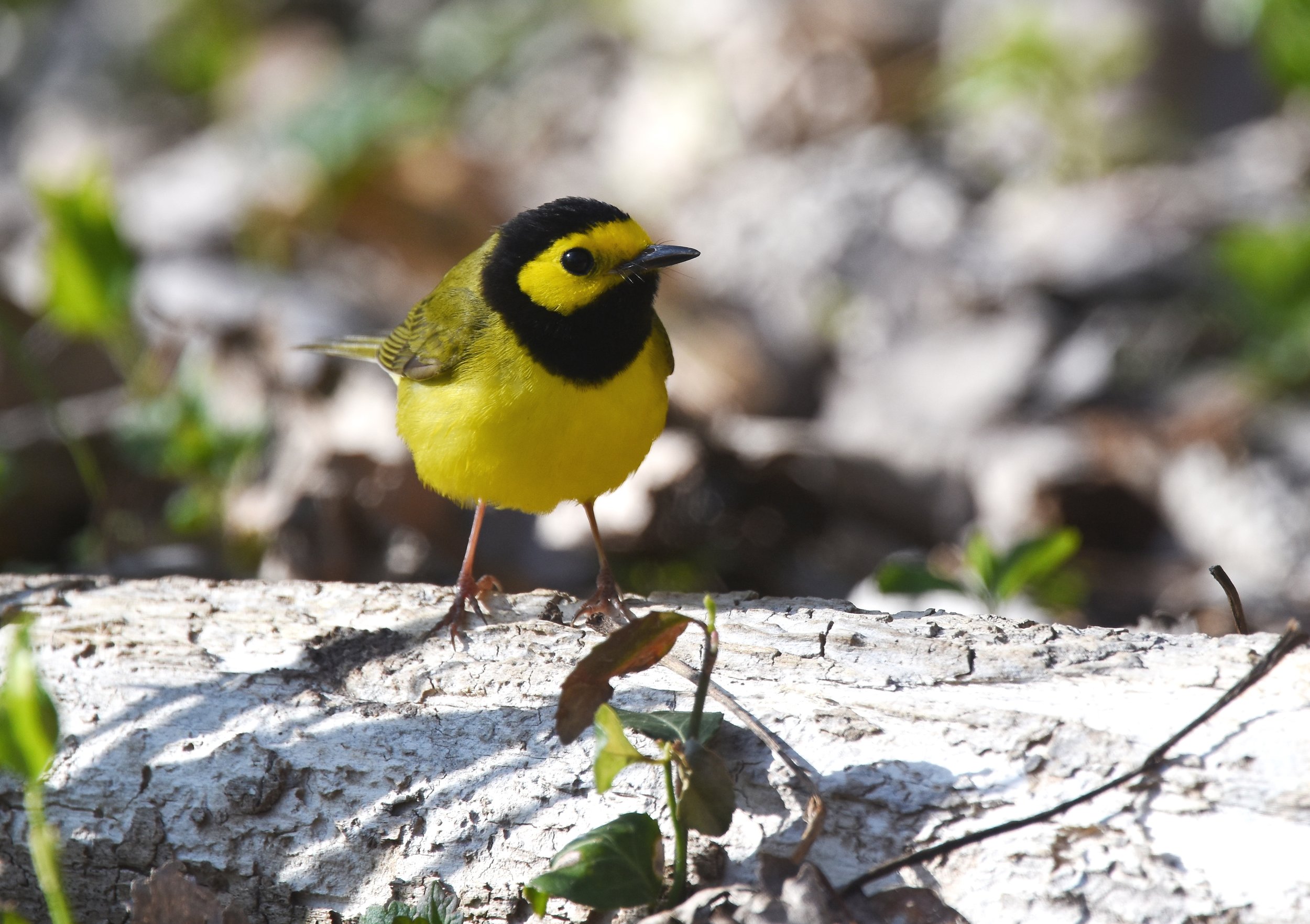Hooded Warbler
Searching for this bird for the better part of the summer, I had more or less given up hope of seeing it this year. A denizen of the forest interior, the bird is on the far northwestern edge of its range in Wisconsin, and has never been recorded in Faville Grove Sanctuary, but manages to find breeding habitat in a few extensive southeastern Wisconsin woodlands. Glorious in its breeding plumage, the colors might light up the forest understory brush habitat where it occurs; but I wouldn't know as I haven't seen the species.
That is, until a few weeks ago when I stumbled upon a hooded warbler on a field trip with our summer interns. As a part of the 12-week internship, we take educational field trips to State Natural Areas and other sites where they learn from land managers about ecological restoration. This particular morning found us in a bog in the Kettle Moraine surrounded by oak forest, a spot where hooded warblers had been documented earlier in the year. However, I wasn't hopeful we'd find one as it was early August and the birds were likely to be quiet, especially given that it was already 9am on a hot day. We stumbled through the forest, eventually finding the bog and only hearing an eastern wood pewee, blue jay, eastern towhees, and robins. It was a quiet morning.
On our walk back to the truck, the interns started to run down the hills along the trail, which ran perpendicular to the moraines so characteristic of the area. As I neared the truck I stopped and listened for a moment and my ears perked up to hear the song of what I presumed to be a hooded warbler. Binoculars from a dozen different vantage points did not yield any conclusive evidence, and soon the bird stopped singing. About 75% sure that this was a hooded warbler, I was unsatisfied. On my phone, I clicked my volume as low as it could go and played an audio recording of a hooded warbler. Okay, now I was about 90% sure this was indeed a hooded warbler. One second later, I was 100% certain this was a hooded warbler as the bird flashed in front of my face and landed on a nearby shrub, tilting its head curiously at me. The bird stayed for a good few minutes, and I got excellent views of its brilliant black hood, yellow face, and olive upper parts.
Photo by Gary Leavens
As the bird lost interest in this man in a blue t-shirt curiously speaking hooded warbler, it entertained us as it flared its tail and hunted for insects. Just as soon was it gone, but what a wonderful few minutes of birding.
The habitat of the bird we found is typical of where one might find the species in southern Wisconsin. As part of the extensive forests of the Kettle Moraine, this bird was occupying a mostly contiguous block of forest about 280 acres in size. Research in Wisconsin has shown that forest blocks of 250-1,400 acres are necessary for hooded warblers to successfully breed.
Hooded warbler nest, photo by Richard Bonnett
Within that forested area, hooded warblers actually seek out opening in the forest canopy; areas filled with dense shrubs like wild plum, blackberry, raspberry, and grapevine provide excellent cover. Nest placement occurs within these shrubs usually from knee to waist height on a human.
Thus, some stand thinning and management can stimulate the more open sites where this species breeds. Indeed, where I found this recent hooded warbler, there were dead oak trees with an understory of brambles, grapevine, buckthorn, and honeysuckle.
It's unlikely that these birds might breed at Faville Grove Sanctuary, but some areas in Faville Woods have the structural characteristics that hooded warblers look for. Nearby areas would likely need to gain forest cover in order for that to happen. It's possible to see these birds in migration, and they should be on the move at about this time, continuing through the middle of September. They tend to migrate through dense forest patches with openings, much like their breeding preference.
Another treasure this bird left me with was an appreciation for the beauty of many of the common birds around the sanctuary. The hooded warbler looks similar to another warbler—the common yellowthroat—but the brilliant colors of the yellowthroat are taken for granted due to its abundance. What beautiful birds, each in their own right.
Hooded warbler, photo by Andy Reago & Chrissy McClarren
Common yellowthroat, photo by Kelly Colgan Azar
Written by Drew Harry, Faville Grove Sanctuary land steward
Cover photo by Dave Inman









